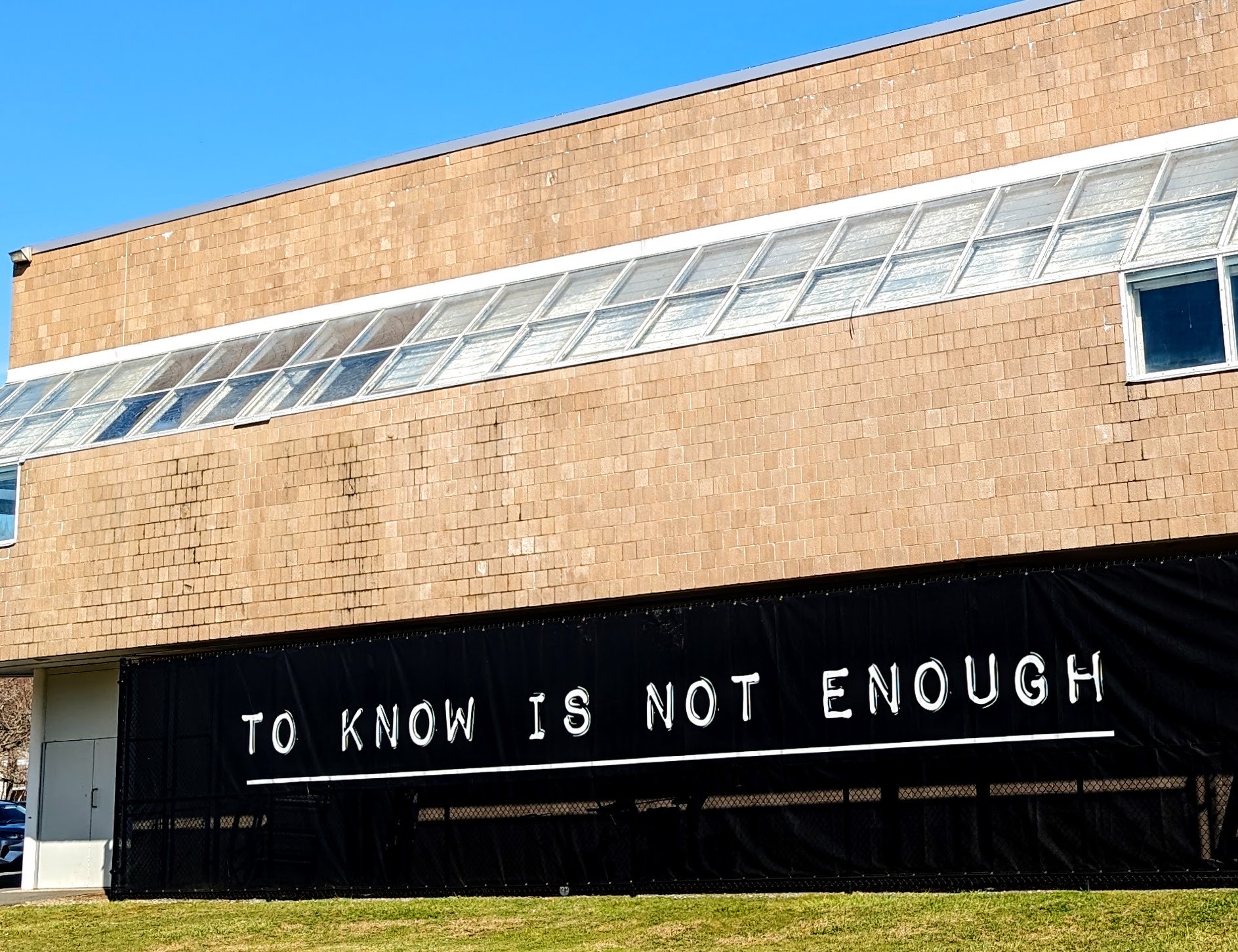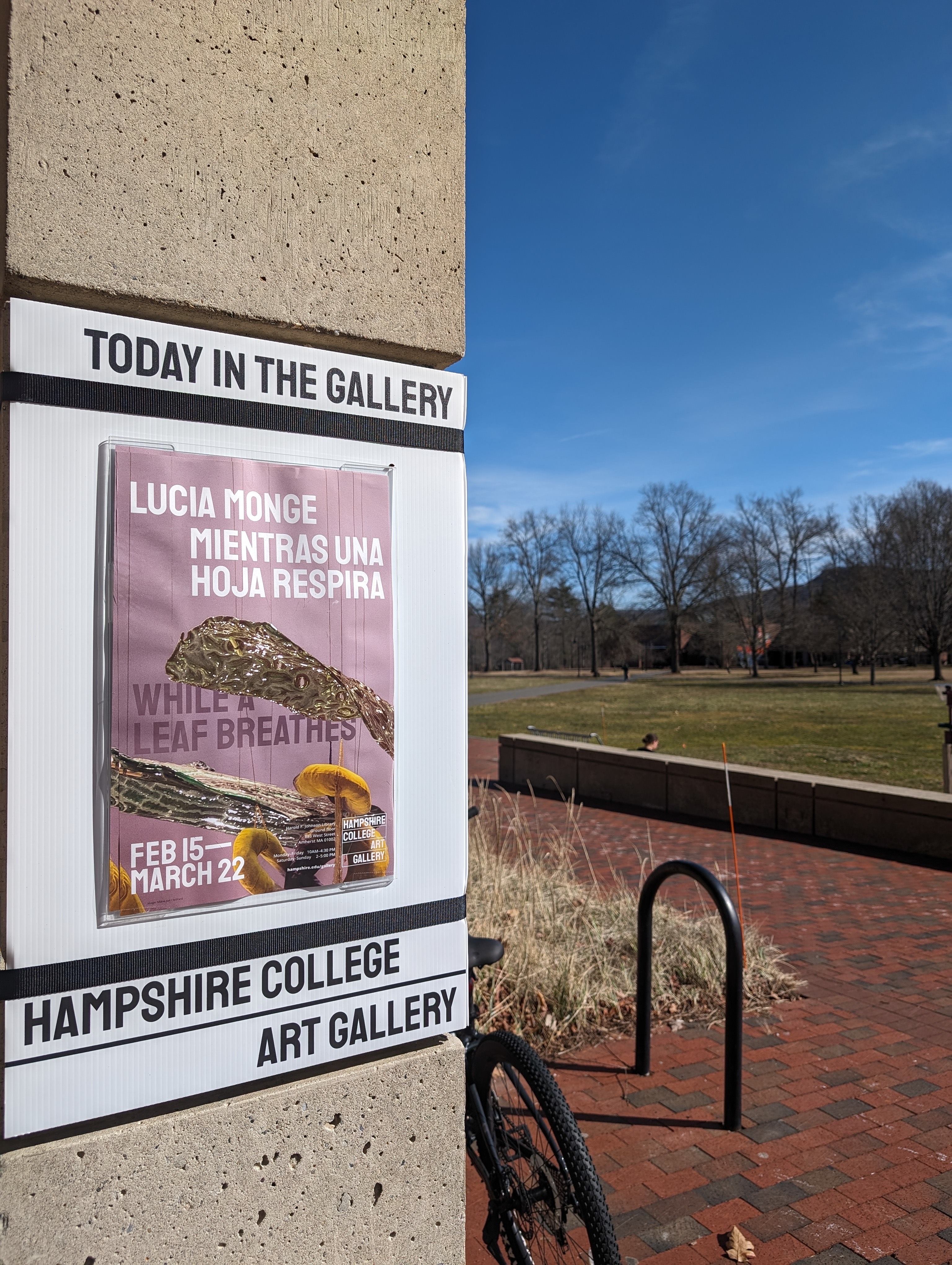
Breathing Air that Breathes Back: Visiting Lucia Monge’s “Mientras Una Hoja Respira/ While a Leaf Breathes”
at Hampshire College, Amherst, MA
Review by Olivia Ann Carye Hallstein
Exiting the city to arrive on a peaceful green campus, scattered with students, feels like an entrance into a completely different world. Having been used to stimulation on every corner, I suddenly experienced my body quieting and listening more deeply. It is as if I am tuning into the whispers of leaves fluttering above and the grass pushed towards the earth by my feet. I land in brief conversations with students asking about Lucia Monge’s exhibition on campus. My walk to the gallery is much like a trickling stream finding its way through a rock-studded decline in search of a body of water to join.
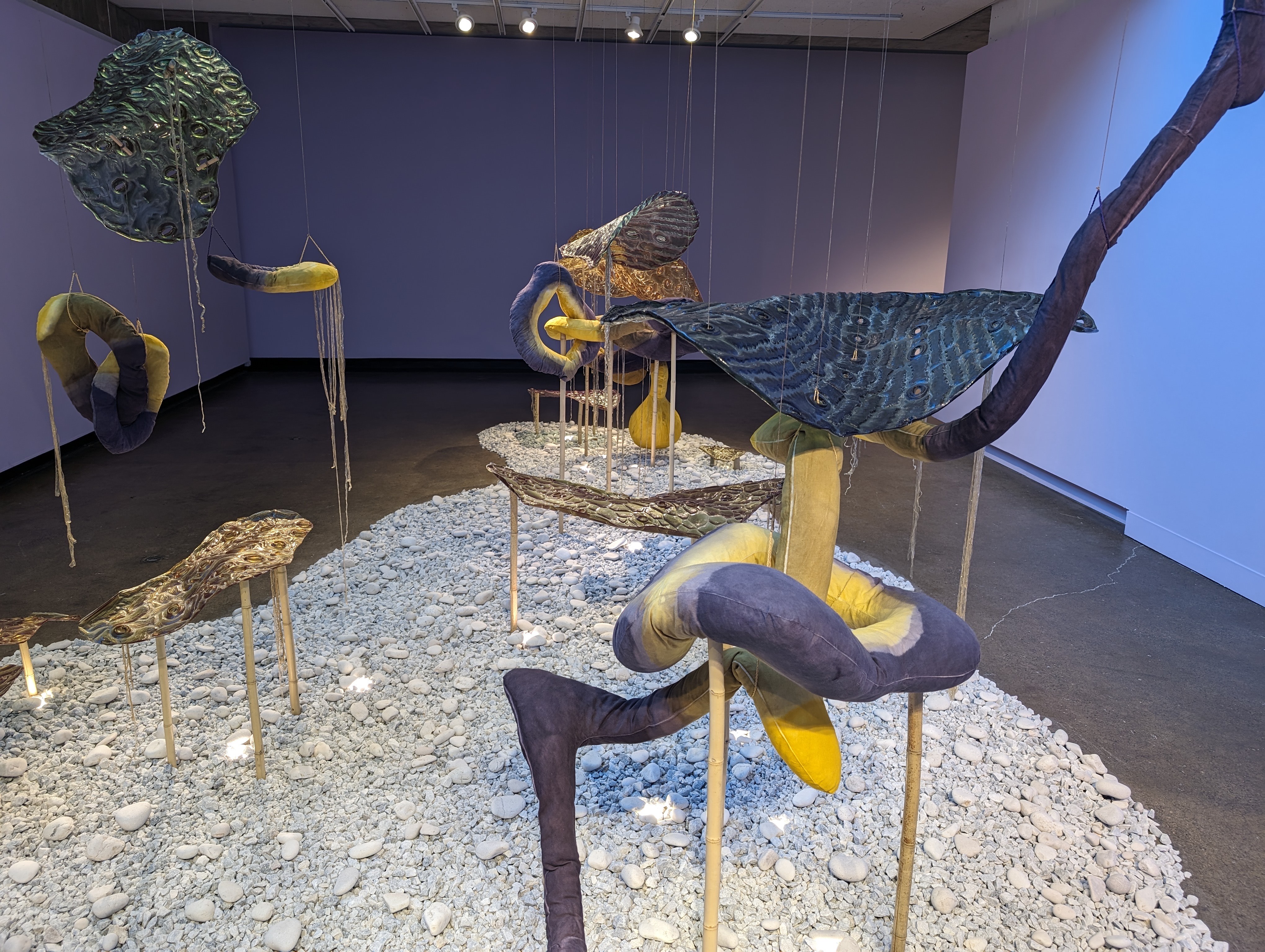
And when I do arrive in this brutalist building and make my way down the stairs, I am struck by the contrast in the linear concrete framing of the gallery compared to the soft, natural structures of Lucia’s sculptures and their accompanying palm trees. Unlike the concrete that surrounds the work, Lucia has created a completely decomposing set of material reflections on stomata. On the wall in writing, the deep relationship between Lucia’s multi-national life as a Peruvian-U.S. American is paired with reflections on vulnerability and the interrelatedness of all beings. This concrete enclosure begins to feel more like a cocoon or the outer walls of a plant cell that protects the complex and delicate structures beneath it. On the wall, it reads:
“Stomata- the pores through which the plants breathe – exchange air with their environment…The plant risks losing life-giving water when opening … for me, stomata have become portals between life and death.” – Lucia Monge
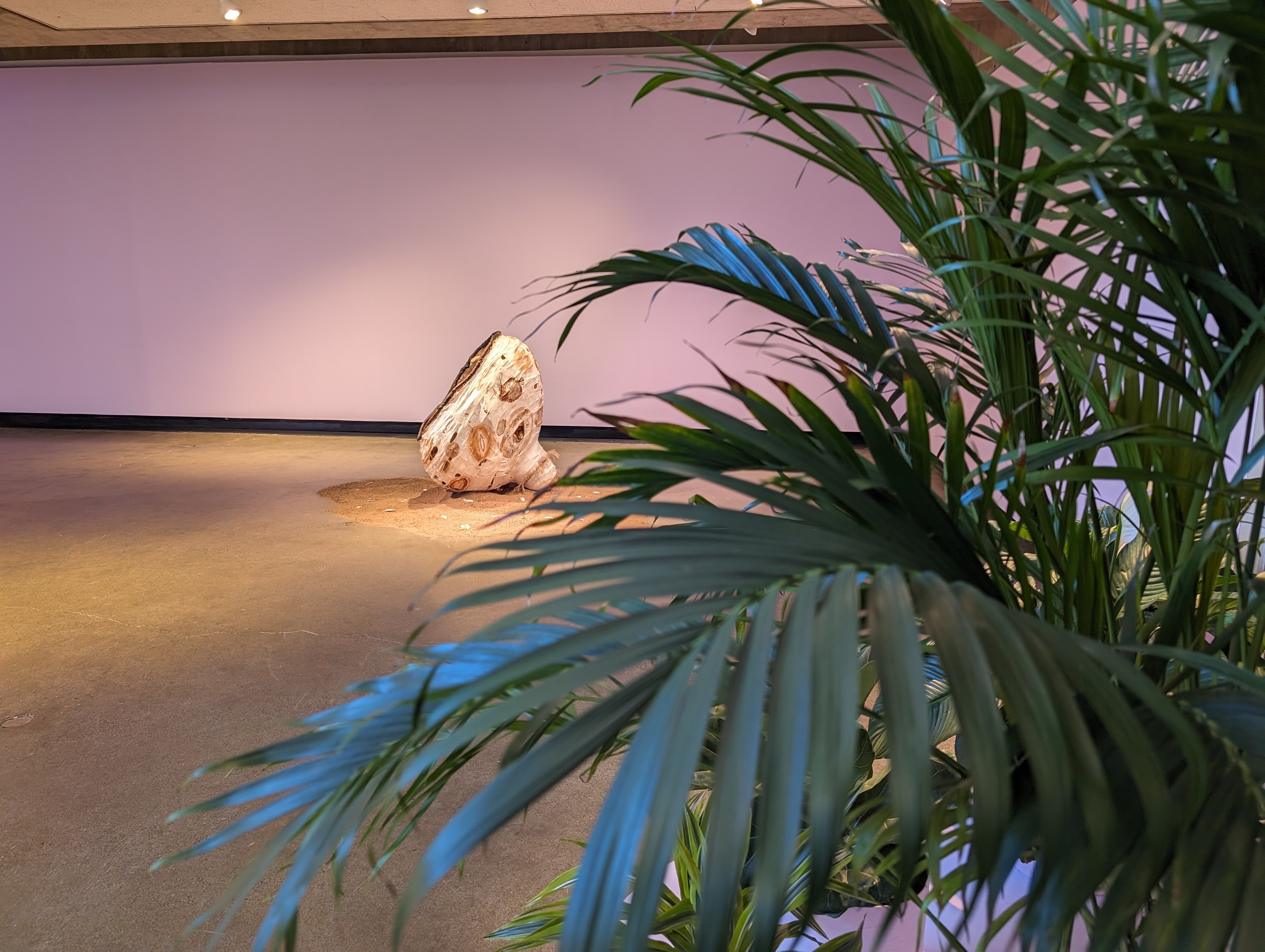
Before me, an egg-like structure built with macramé, natural twine, rice paper dyed with turmeric, and straw reeds sits expectantly. Behind a family of palm trees, I am almost voyeuristic in my expedition into the gallery rooms, where I am confronted with larger-than-life representations of a proportionately microscopic subject. The feathery leaves hug my vantage point as the light streams from above. I venture toward the structure, sitting on the ground. Realizing only after changing my perspective that it is both I and the eye that awaits me that are observers of each other. Sands at its base disperse my thoughts as the textured living core lined with turkeytail mushrooms observes my presence as I do this object. I am reminded of my daily exchanges and the vulnerability that Lucia describes: how, when entering the world each day, I also enter into an exchange of give and take, a bartering of water for carbon, that is essential to both living and community. The eye acts as a quiet reminder that what I think I know is only a perspective.
Turning around, I encounter a dancing river of figures made from bioplastics, turmeric, and logwood-dyed cotton, and recycled paper flying over a delicate island of what I believe is white limestone. They sway in conversation, revealing soft and structured textures based on Lucia’s careful observations of plant cell patterns. Shimmering and welcoming me into the remaining space, I dance around the work, mimicking how the objects dance around each other, revealing new relationships between them. Colors and forms balance and glide as if these static forms were moving. I am met with a calm and playful tone and am surprised to discover an object hidden at the end of this twirling iridescent river.
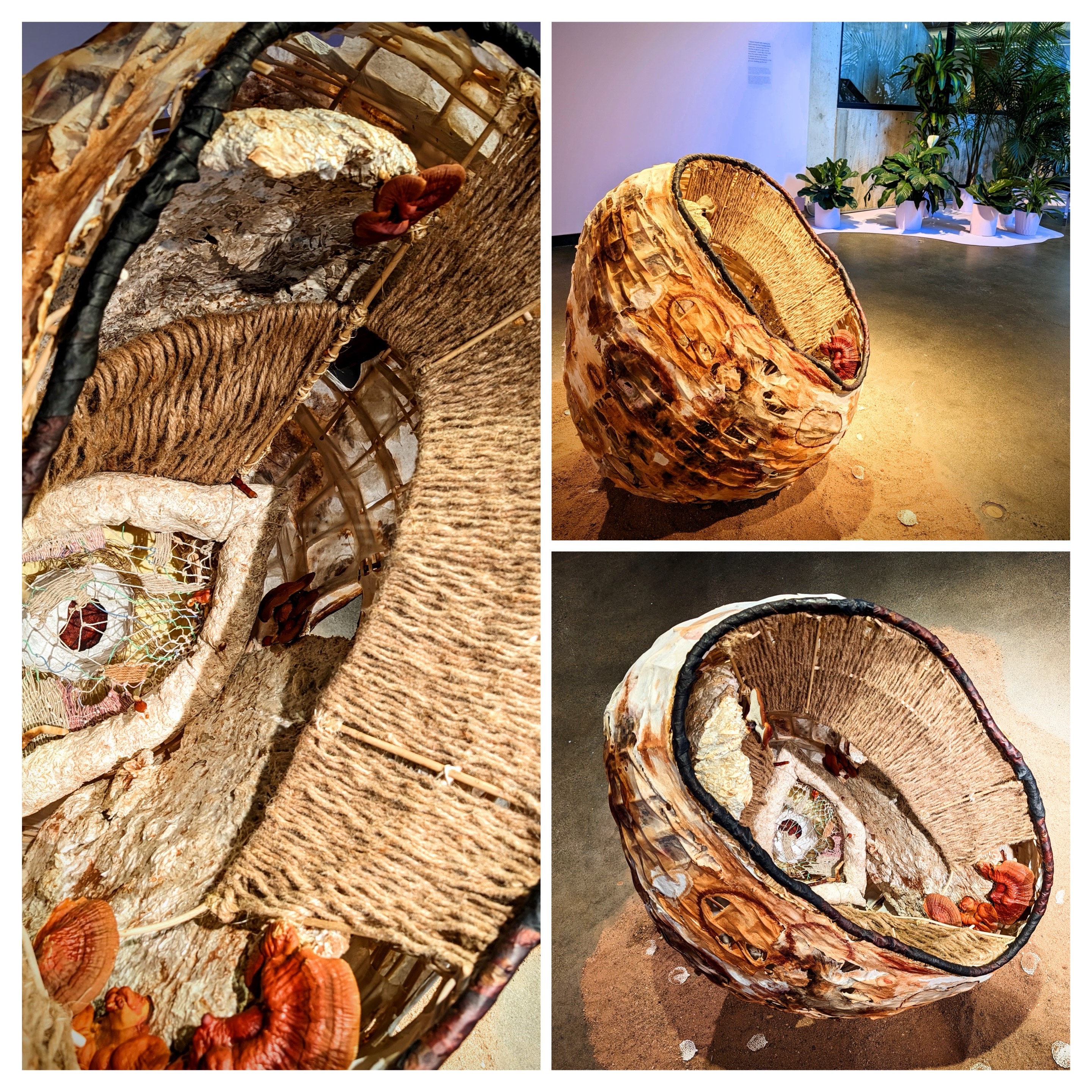
As if exiting a forest enclosure, a family of palm trees shelters a plush object laying on the ground before it. A closed stomata is guarded, yet perhaps the most vulnerable object portrayed. Surrounding the piece are macramé dream-weavers capturing my thoughts and impressions. I stop short and allow an aching in my heart to reveal itself, knowing the irony of a soft outer shell that acts as limited armor in guarded times. It is feminine and kind, although closed and protective, so different from the first object, which was open, guarded, but “vulnerable” in a literal sense. Peaceful, like a corpse laid to rest, I remember that all of its materials will reintegrate into the earth and replenish the life-giving soils that nourish us in return.
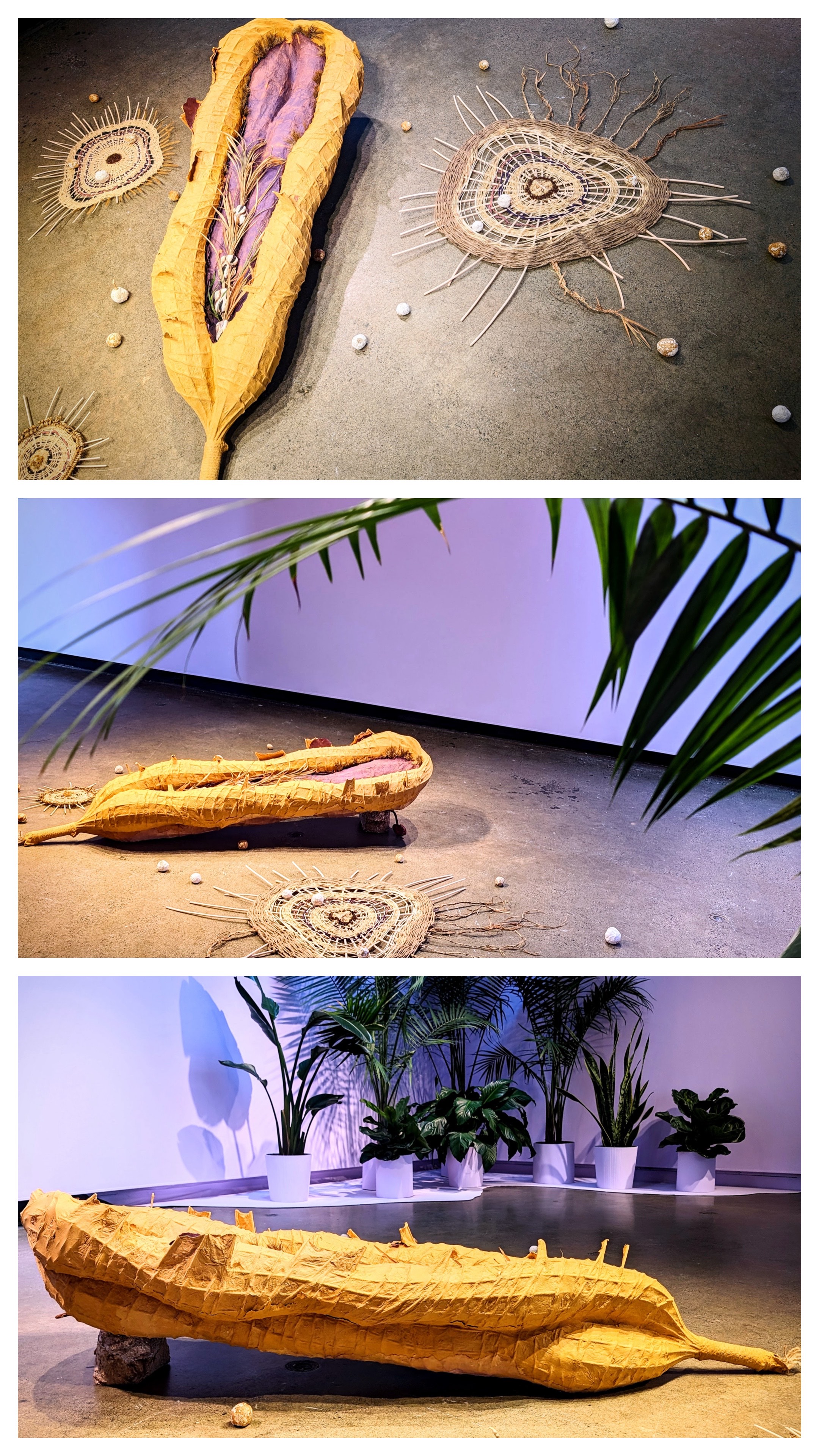
Exiting this meditation on co-existence, I reenter the chilly landscape sprinkled with the beginnings of spring. I am greeted on my way back by a large sign on the wall of a neighboring building that echoes Lucia’s mystical portrayal of the invisible: “To Know is Not Enough.” Sent into the remaining day, I think about the stomata that lives within each of us and the importance of breathing through it all.
